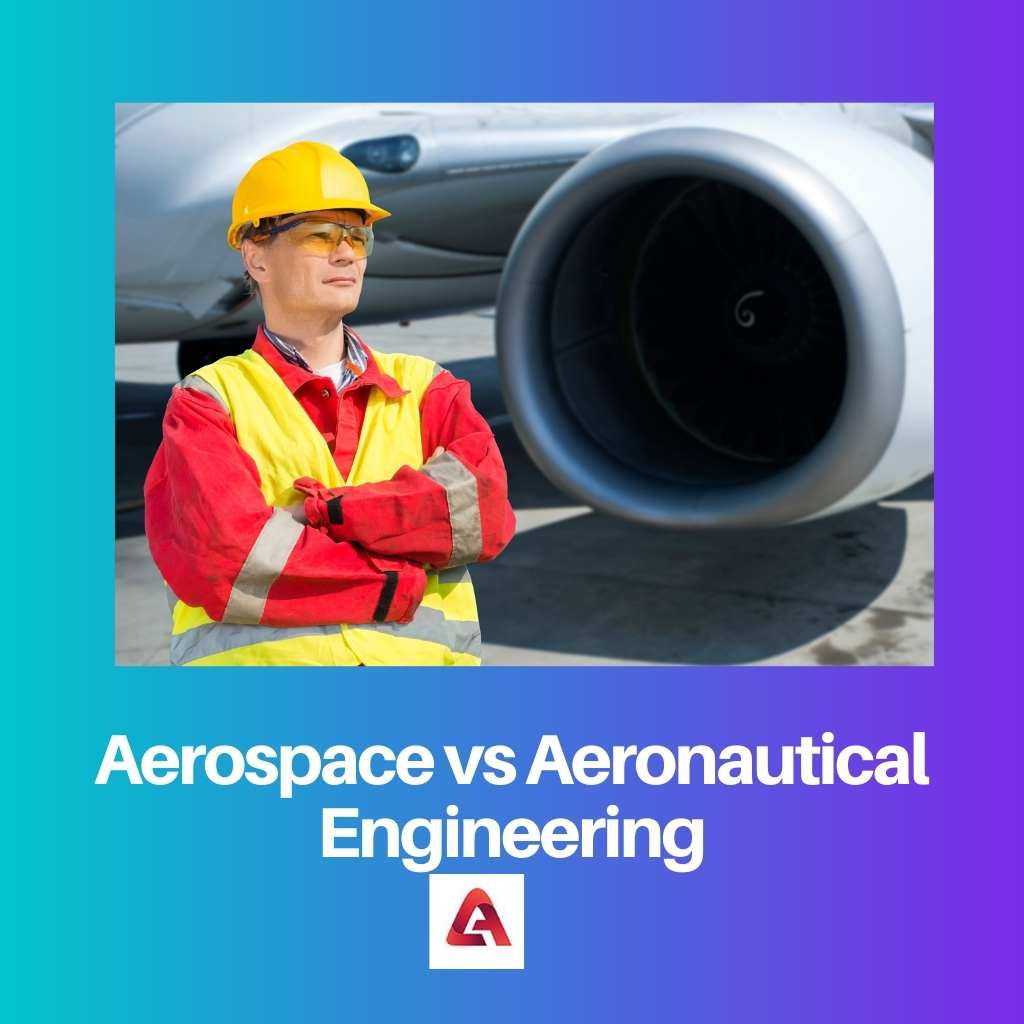Nowadays, engineering as a career is trending among the youth. Aerospace and aeronautical engineering are two interchangeably used words as they have so many similarities.
Both branches require a lot of designing and manufacturing skills. Also, many technicalities such as mechanics, calculation, and motion-related technology are used.
Key Takeaways
- Aerospace engineering encompasses designing, developing, and testing aircraft, spacecraft, and related systems.
- Aeronautical engineering is a sub-discipline of aerospace engineering, focusing specifically on designing and developing aircraft and related systems.
- Aerospace engineering covers a broader range of technologies and systems, including those used in space travel, while aeronautical engineering is more focused on atmospheric flight.
Aerospace vs Aeronautical Engineering
Aerospace engineering focuses on a broader scope, including the design and development of aircraft and spacecraft that operate outside of the earth’s atmosphere. Aeronautical engineering focuses on designing and developing aircraft and related systems that operate within the earth’s atmosphere.

Aerospace engineering is designing aircraft or spacecraft within the Earth’s atmosphere and outer space. It mainly focuses on manufacturing spacecraft, aircraft, and helicopters.
The construction of aircraft or spacecraft depends upon several factors, such as thermodynamics, aerodynamics, rocket propulsion system, orbital system, and orbital mechanism and motion.
Aeronautical engineering has the limitation that the aircraft’s trajectory is confined up to the earth’s atmosphere. Aeronautical engineering has had a great scope in recent days, and also many youths are attracted to this branch.
The airplane construction and design depend upon many factors such as air friction, heating effect, the density of used material, flight mechanism, and airflow.
Comparison Table
| Parameters of Comparison | Aerospace Engineering | Aeronautical Engineering |
|---|---|---|
| Branches | Aerospace engineering has two branches namely aeronautics and astronautics. | Aeronautical engineering is not further categorized. |
| Commencement | Aerospace engineering started in the late 1940s. | Aeronautical engineering started in the early 20th century |
| Pioneer | George Cayley is known to be the father of aerospace engineering. | Orville and Wilbur Wright are given the credit for developing aeronautical engineering. |
| Coverage | Aerospace engineering covers the flight system from the earth’s atmosphere to space. | Aeronautical engineering covers the flight system up to the earth’s atmosphere. |
| Based Theory | Aerospace engineering is based on aerodynamic and astrodynamics. | Aeronautical engineering is based on aerodynamics and thermodynamics. |
What is Aerospace Engineering?
A branch of engineering deals with studying, developing, and designing aircraft and spacecraft. Aerospace engineering is broadly divided into two branches: aeronautical and astronautical.
Similarly, a branch of engineering is quite similar to aerospace engineering but mainly focuses on the electronic aspects of aerospace engineering is preferably known as Avionics.
Aerospace engineering uses different types of techniques, such as radar signal transmission. The radar transmission enables remote sensing study of the carrier satellite’s navigation. This transmission is solely based on radar signals.
As the name suggests, aerospace aircraft or spacecraft need aerodynamic structures such as wings. While talking about space, one must know about the celestial bodies, their path prediction, and their approximate location.
Knowing the astronomical bodies, this branch of Physics is technically termed astrodynamics.
The common mechanics plays a huge role in building the carrier satellite. The study of applied forces and types of motion are viral parts of mechanical systems. This requires huge calculations such as linear algebra, calculus, differential equations, and many more.
The carrier satellite needs some energy to get established in space or the Earth’s environment. This energy is gained through propulsion which is mainly contributed by the combustion of fuel.
The material from which the satellite is made plays an important role, as the material must be lightweight and within budget.

What is Aeronautical Engineering?
Aeronautical engineering is the branch of physics that is involved in making the design and manufacturing of aircraft. The strategies for handling aircraft which fly within the atmosphere.
The word aviation technically refers to the flight of any object in the atmosphere.
Also, aviation deals with the flight of heavy metal aircraft, including airships and balloons. The main focus of aeronautical engineering is aerodynamics, a branch of dynamics that focuses on motion based on the air and its interaction with the aircraft’s motion.
The aerodynamic study broadly has three areas of flow: incompressible, transonic, and compressible.
The compressible flow is marked when the compressed air, mostly above the speed of sound, emerges as shockwaves. The speed above the speed of sound is termed supersonic speed.
Also, the speed of a wave is stated as subsonic if the speed is lesser than the speed of sound.
On the other hand, incompressible flow is marked when the atmospheric air, at subsonic speed, is deflected by objects. The transonic flow is obtained when the airspeed is in transition, and the object is made to float.

Main Differences between Aerospace and Aeronautical Engineering
- Aerospace engineering focuses on the construction of airplanes and spacecraft, whereas aeronautical engineering focuses mainly on constructing airplanes.
- In aerospace engineering, the flights take into the earth’s atmosphere and also to space, whereas, in aeronautical engineering, the flights are taken only up to the earth’s atmosphere.
- In aerospace engineering, gravity is not a huge factor as this spacecraft going into space does not consider gravity, whereas in aeronautical engineering, gravity plays a huge role as the flight may get affected by gravity.
- In aerospace engineering, the spacecraft speed crosses the escape velocity of the earth to reach space, whereas, in aeronautical engineering, the aircraft does not cross the escape velocity of the earth and is limited up to the atmosphere.
- The aerospace aircraft moves from one environment to the other, observing heat and friction, whereas aeronautical aircraft do not encounter any heat or friction.

- http://staging.cdio.org/files/document/file/prob_based_lrn.pdf
- https://www.sciencedirect.com/science/article/pii/S0376042104000594
- https://books.google.com/books?hl=en&lr=&id=YUmGnWp_LfUC&oi=fnd&pg=PP17&dq=aeronautical+engineering&ots=cweWJFqxVz&sig=U7HrOqG_1uhuI5ru0V3a-FcZzAo
- http://www.irbis-nbuv.gov.ua/cgi-bin/irbis_nbuv/cgiirbis_64.exe?I21DBN=LINK&P21DBN=UJRN&Z21ID=&S21REF=10&S21CNR=20&S21STN=1&S21FMT=ASP_meta&C21COM=S&2_S21P03=FILA=&2_S21STR=Vnau_2017_3_7
